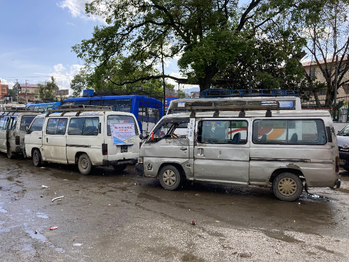Electrifying Public Transport in Nepal
Sustainable Electric Transport for Nepal (SET4NPL)
-
Country
-
Lead executing agency
More
-
Overall term
2023 to 2028
-
Other Stakeholders
Ministry of Forests and Environment (MoFE) / Ministry of Finance (MoF) / Ministry of Labor, Employment and Transport, Bagamati Province / National Electricity Authority (NEA) / Nepali Class-A Banks / United States International Development Finance Corporation (DFC) / United States Agency for International Development (USAID)
-
Products and expertise
Sustainable infrastructure: water, energy, transport

Context
Public transport in Nepal is provided by numerous small private companies who offer their services by running diesel buses. These buses contribute to poor air quality and high greenhouse gas (GHG) emissions and the fact that they are run on diesel increases the country’s trade deficit having to import all fossil fuels.
Given that Nepal generates clean hydropower, electric mobility offers a promising solution to reduce emissions and reduce the trade deficit. Moreover, electric Mini- and Microbuses (EMBs) are cheaper to operate, which, in total, would lead to significant cost benefits compared to operating diesel buses. However, high upfront costs, uncertainties about charging options, and the absence of favourable business models as well as financing mechanisms make it hard for PTOs to purchase EMBs.
Objective
Nepal has introduced 3,500 EMBs for public transport. Affordable business models and financing mechanisms enable PTOs to make the necessary investments and allow a long-term shift to electric mobility in the country.
Approach
The project establishes three primary financial instruments to promote electric mobility:
- A subsidy mechanism to reduce the high upfront costs of EMBs,
- A loan and leasing/renting scheme to offer affordable financing conditions, and
- A partial first loss guarantee to increase the willingness of banks to finance the new technology.
By supporting only pre-qualified EMBs, the project assures good performance of the vehicles and demonstrates cost benefits, making electric mobility the preferred option. Simultaneously, the project works to introduce public electric charging stations to facilitate the operation of electric vehicles and digital ticketing solutions for public transport users.
The project is financed by the Mitigation Action Facility (MAF) and jointly implemented by Global Green Growth Institute (GGGI) and GIZ.

Last update: February 2024





